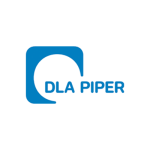Legislation enabling the OECD's Multilateral Instrument
On August 24 2018, Australia enacted legislation that allows the OECD's Multilateral Instrument (MLI) to have force of law in Australia.
The MLI will have effect once ratification and diplomatic procedures are completed by Australia and each treaty country partner.
The MLI would implement the OECD's BEPS Action Plan into Australia's double tax treaties, subject to specific reservations expressed by the Australian government (such as those on specific permanent establishment articles).
In effect, the enabling legislation means that Australia's double tax treaties could be amended effective from as early as January 1 2019 (for example, for certain withholding taxes), subject to the formal procedures being completed.
Legislation for hybrid mismatch rules
On August 24 2018, Australia enacted its hybrid mismatch rules.
The rules implement BEPS Action 2, subject to Australian specific amendments. Specifically:
The rules apply to mismatches in Australian and foreign tax outcomes arising from a hybrid financial instrument, a hybrid payer, a reverse hybrid, a branch hybrid, a deducting hybrid an imported hybrid; and
In addition, the rules include a targeted integrity rule, which aims to prevent multinationals from bypassing the hybrid mismatch rules by using interposed country conduit type vehicles.
The rules will apply to income years starting on or after January 1 2019.
Managed investment trusts and stapled structures – integrity measures
On August 7 2018, the Australian government released further exposure draft legislation and explanatory materials affecting managed investment trusts (MITs) and stapled structures.
The further exposure draft legislation imposes a non-arm's length income rule and a statutory cap, which could apply to some cross-staple payments during the seven or 15-year transitional period in which a structure qualifies for the 15% concessional MIT withholding tax rate.
Cross-border financing
On August 1 2018, the Australian government and the Australian Taxation Office (ATO) released a number of materials relevant to cross-border financing:
Draft legislation and draft taxation determination TD 2018/D4, which in effect would require entities to value its assets and debt capital with their accounting values, for the purposes of Australia's thin capitalisation rules;
Draft legislation, which is intended to ensure that foreign controlled Australian consolidated entities and groups with foreign operations to be treated as both outward and inward investing entities, for the purposes of the thin capitalisation rules;
Draft taxation determination TD 2018/D5, which identifies the types of costs which are debt deductions that are subject to Australia's thin capitalisation rules; and
Updated practical compliance guideline PCG 2017/4 (the ATO's tax compliance guidelines on cross-border financing), which has been updated to include a draft schedule to set out specific risk indicators for related-party derivative arrangements that are used to hedge or manage the economic exposure of a company or group of companies.
New tests for reduced company tax rate
On August 31 2018, Australia enacted legislation that amends the qualifying rules for the reduced company tax rate.
In effect, a corporate tax entity will qualify for the lower company tax rate of 27.5% (rather than 30%) for an income year if:
No more than 80% of its assessable income for that income year is passive income; and
The aggregated turnover – of the corporate tax entity, its affiliates and its connected entities – is less than the aggregated turnover threshold (A$50 million for the 2018-19 income year) for that income year.
These changes apply from the 2017-2018 income year.











